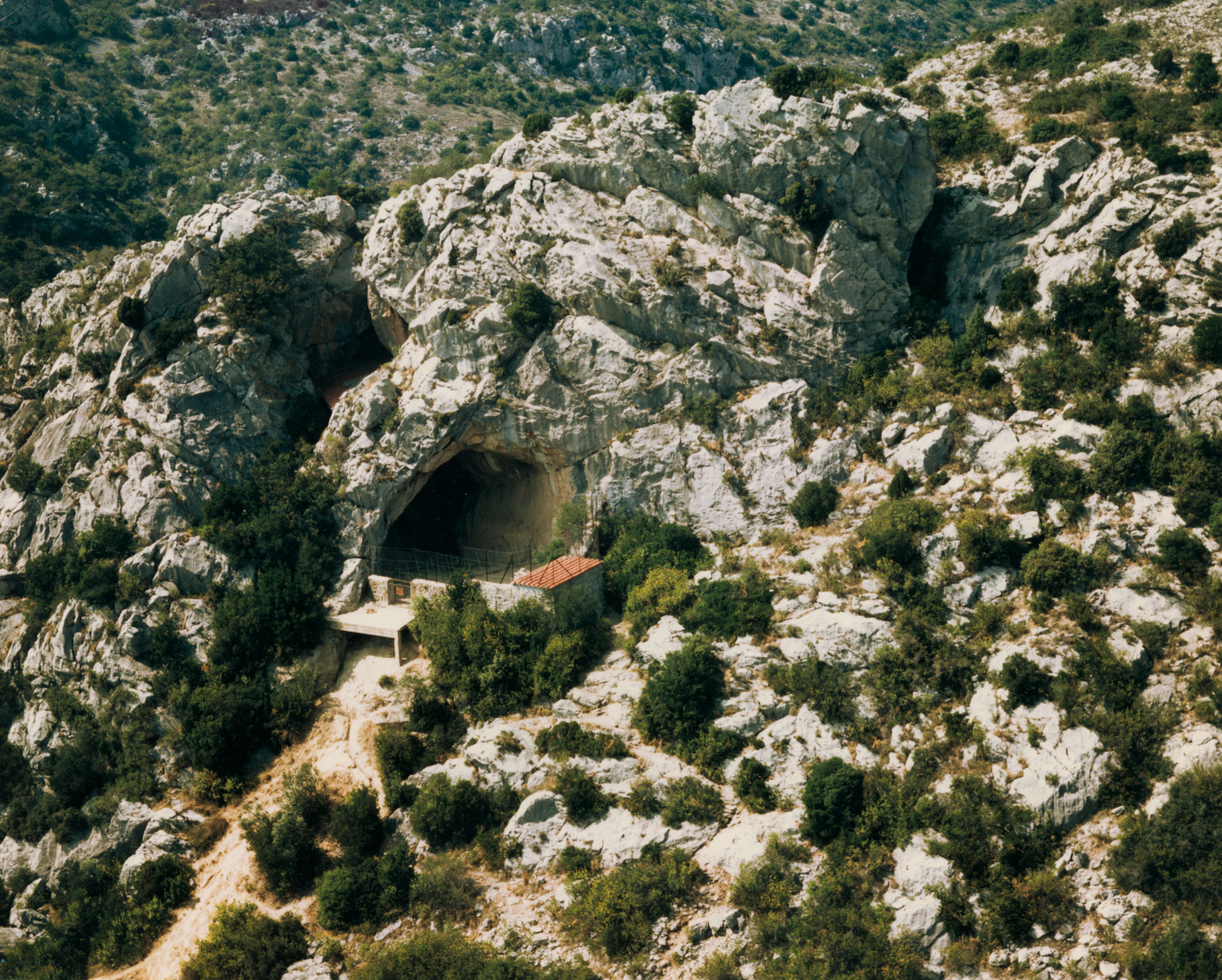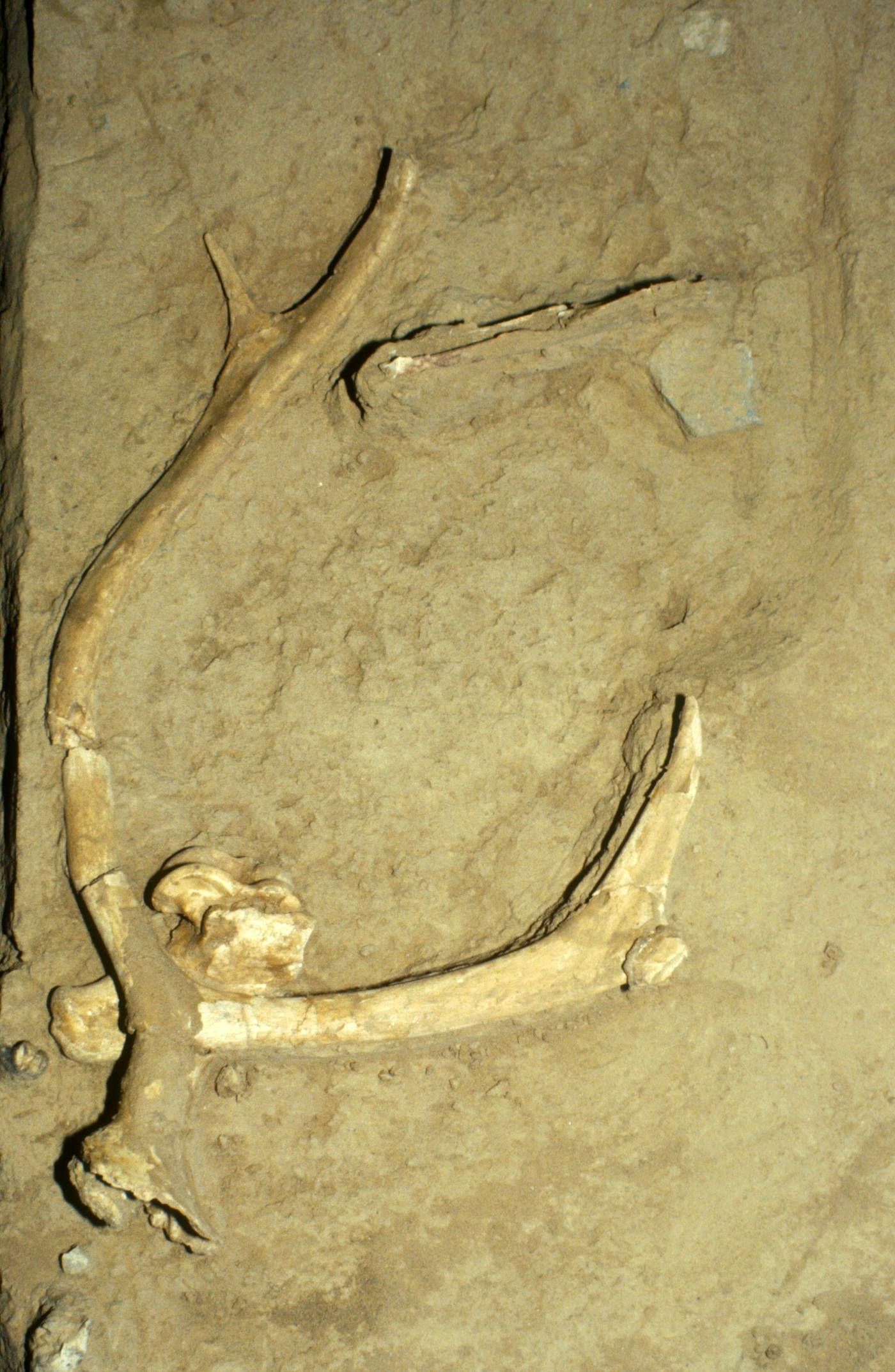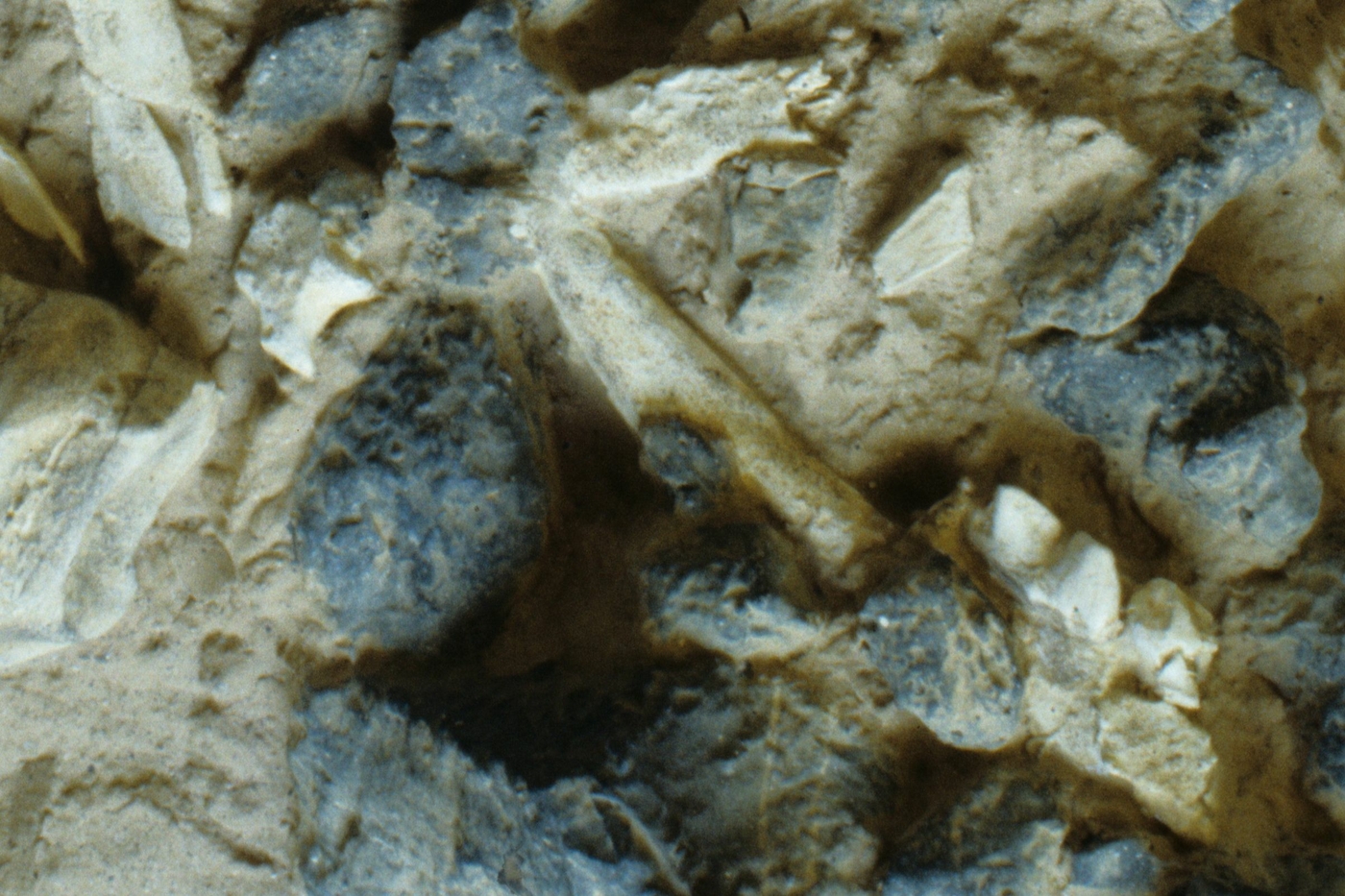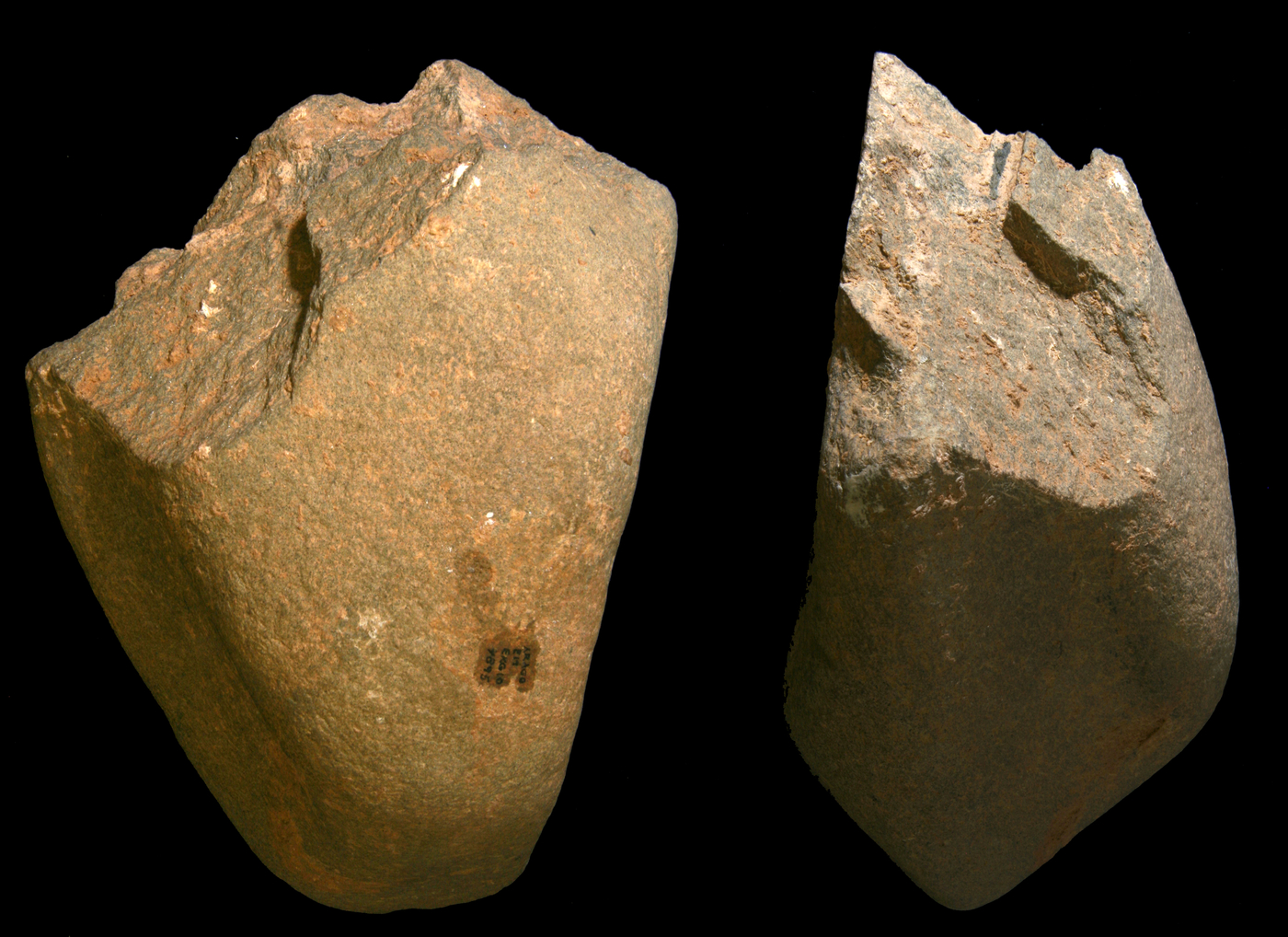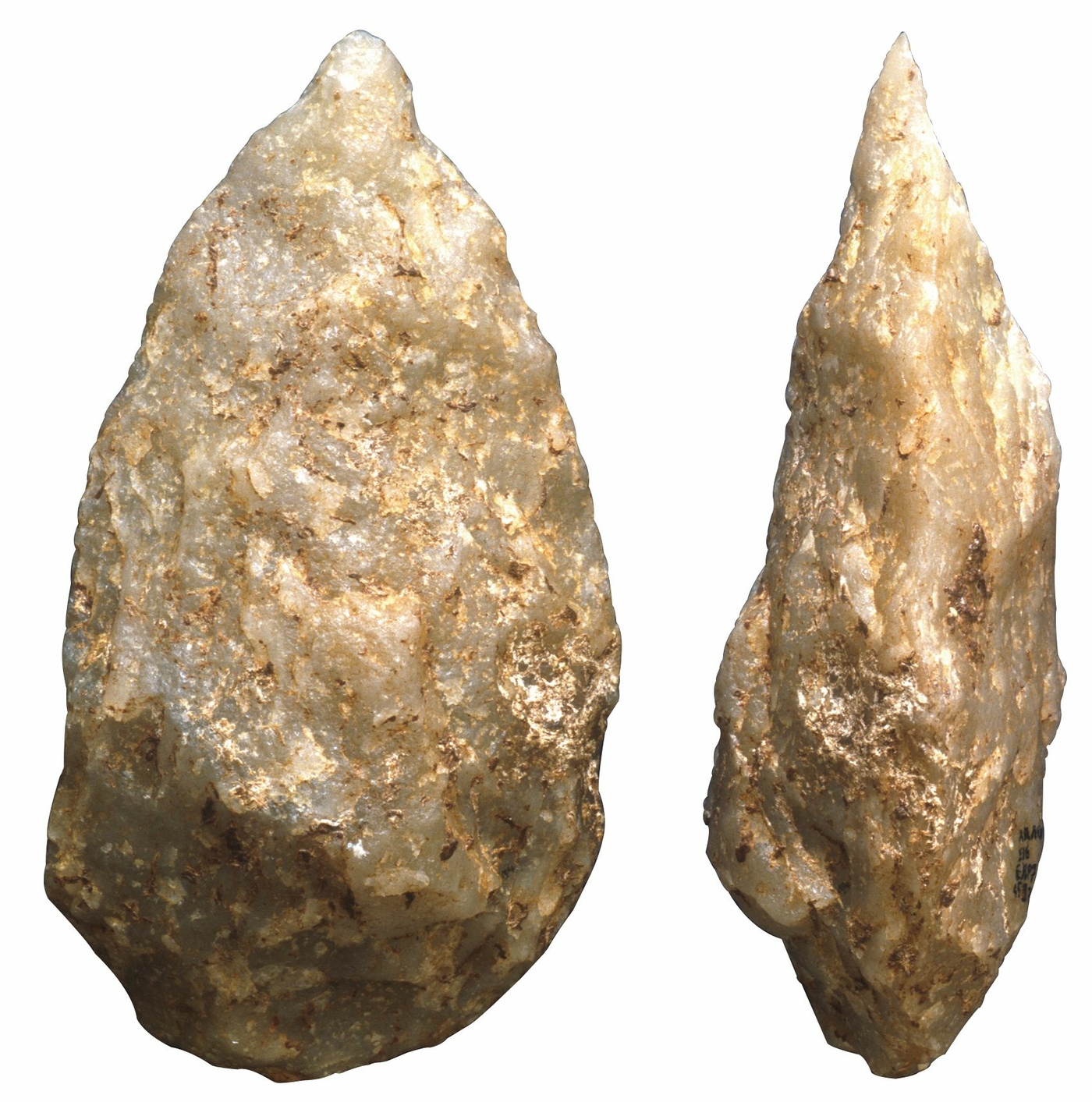Tautavel: the Caune de l’Arago
The site where the famous skull of Tautavel man was discovered, it sheds light on 600,000 years of history in the south of France with a fill containing up to fifty different occupation levels.

The Caune de l'Arago in Tautavel, located in the Corbières Massif, on the northern edge of the Roussillon plain, is a vast cavity that may originally have been more than 120 metres long. It was completely filled in during the Quaternary by sediment carried by the wind or runoffs.
Location
Located some 80 metres above the Tautavel valley, it provided an ideal observation post for prehistoric hunters, who could monitor the movement of game across the plain and access another hunting ground, the plateau.
The discovery
The value of the cave had been known about since 1829, when the celebrated naturalist Marcel de Serres, and the chemist Joseph Farines published their discovery of animal bones, which they described as “antediluvian". In 1948, Georges Taule discovered, on the floor of the cave, tools he described as prehistoric, associated with bones from the Quaternary, which he gave to Abbé Jean Abelanet, who was interested in the prehistoric period. Researchers and amateurs from the local region began digging pits and carrying out small-scale excavations from 1956 to 1962. It was not until May 1963, after a visit to the cave, in the company of Jean Abelanet and Dr Rigaud, that Henry and Marie-Antoinette de Lumley decided to open a large-scale excavation.
The fill
The deposits, which were nearly 15 metres thick, were between 690,000 and 92,000 years old. The multi-disciplinary study of the site reveals different occupation layers and alternating periods of cold and temperature periods, humid periods and dry periods.
Different types of occupation
Over time, prehistoric hunters set up in this cave, at fairly regular intervals, either permanent camps, temporary camps, simple hunting halts or butchery workshop. For example, Layer G, dated to 450,000 years ago, corresponds to a camp used for many years by hunters of large herbivores. Layer F, dated to 440,000 years ago, was a temporary camp for mouflon hunters. Layer J, dated to 500,000 years ago, corresponds to a seasonal camp for hunters of cervids - stags and deer - while Layer L, dated to 550,000 years ago, was a simple hunting halt used by reindeer hunters.
Human remains
Archaeologists uncovered human remains from Caune de l’Arago from the very first excavations. With 151 human remains, it is a key site in world prehistory. They come from multiple occupation levels spanning the Middle Pleistocene. A large quantity and variety of bones are exhumed almost every year, including skulls, mandibles, teeth, vertebras, humeri, pelvises, femurs, tibias, and fibulas, belonging to children and adults, men and women, some of which bear traces of cannibalism.
The collections
With some 600,000 discoveries to date, the wealth of finds at Caune de l’Arago is well established. This collection mainly contains faunal remains, lithic finds and rare human remains. The faunal remains are primarily those of large herbivores, part of the stable diet of large predators and human beings. The remains discovered in the excavations attest to the consumption of these animals, mostly by humans. The lithic finds confirm the presence of humans in the cave and shed light on the various activities they may have performed.
Research
With its fill of more than 15 metres covering 600,000 years of history and more than 50 different occupation levels, the Caune de l’Arago is a major site in world prehistory. This is why Professor Henry de Lumley formed a multi-disciplinary research team soon after excavations began in 1964. The team is now composed of some twenty people under the direction of Sophie Grégoire. It is studying the fill and more than 600,000 objects discovered on the site to date.
Useful links
-
The Musée de Tautavel : 450000ans.com


